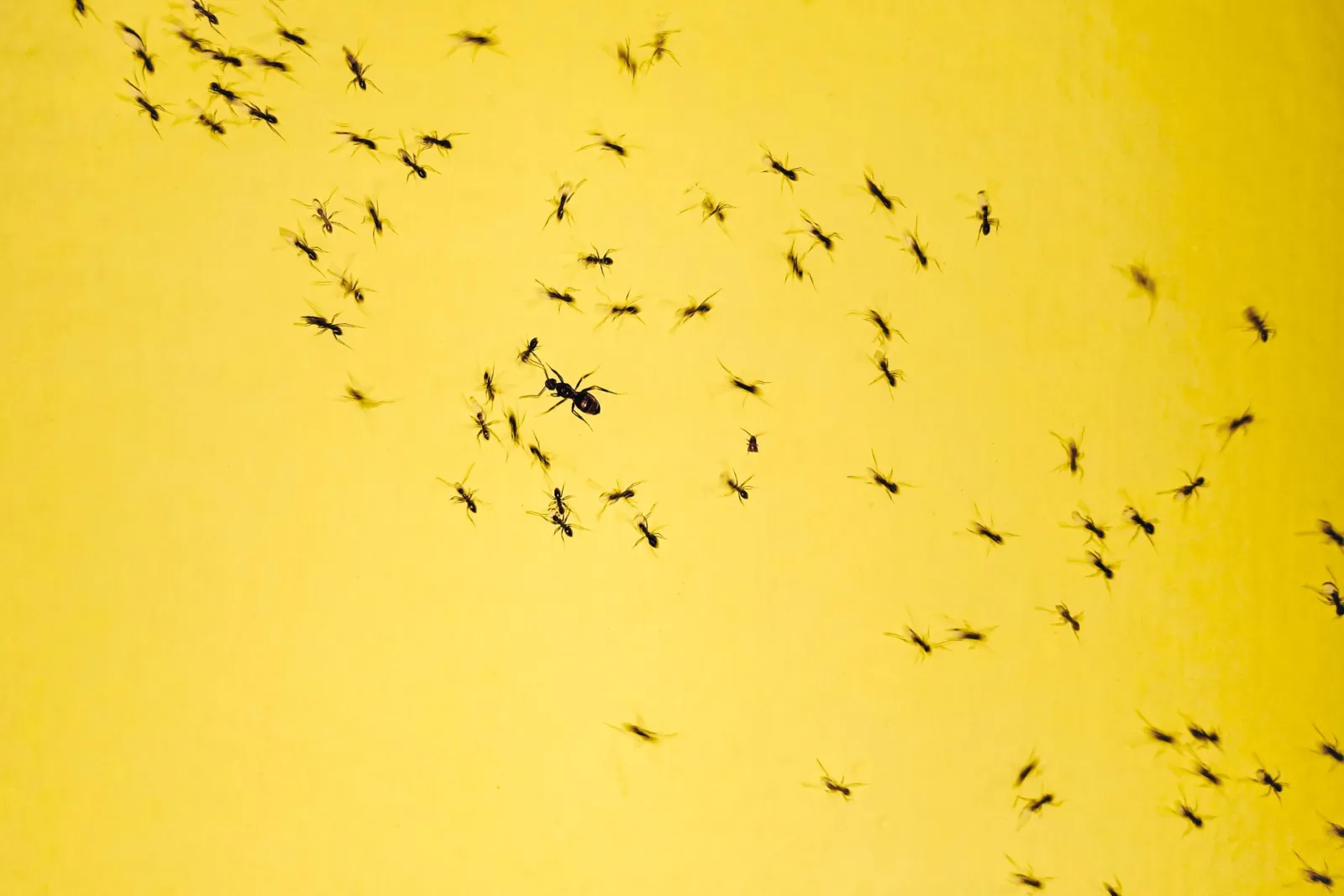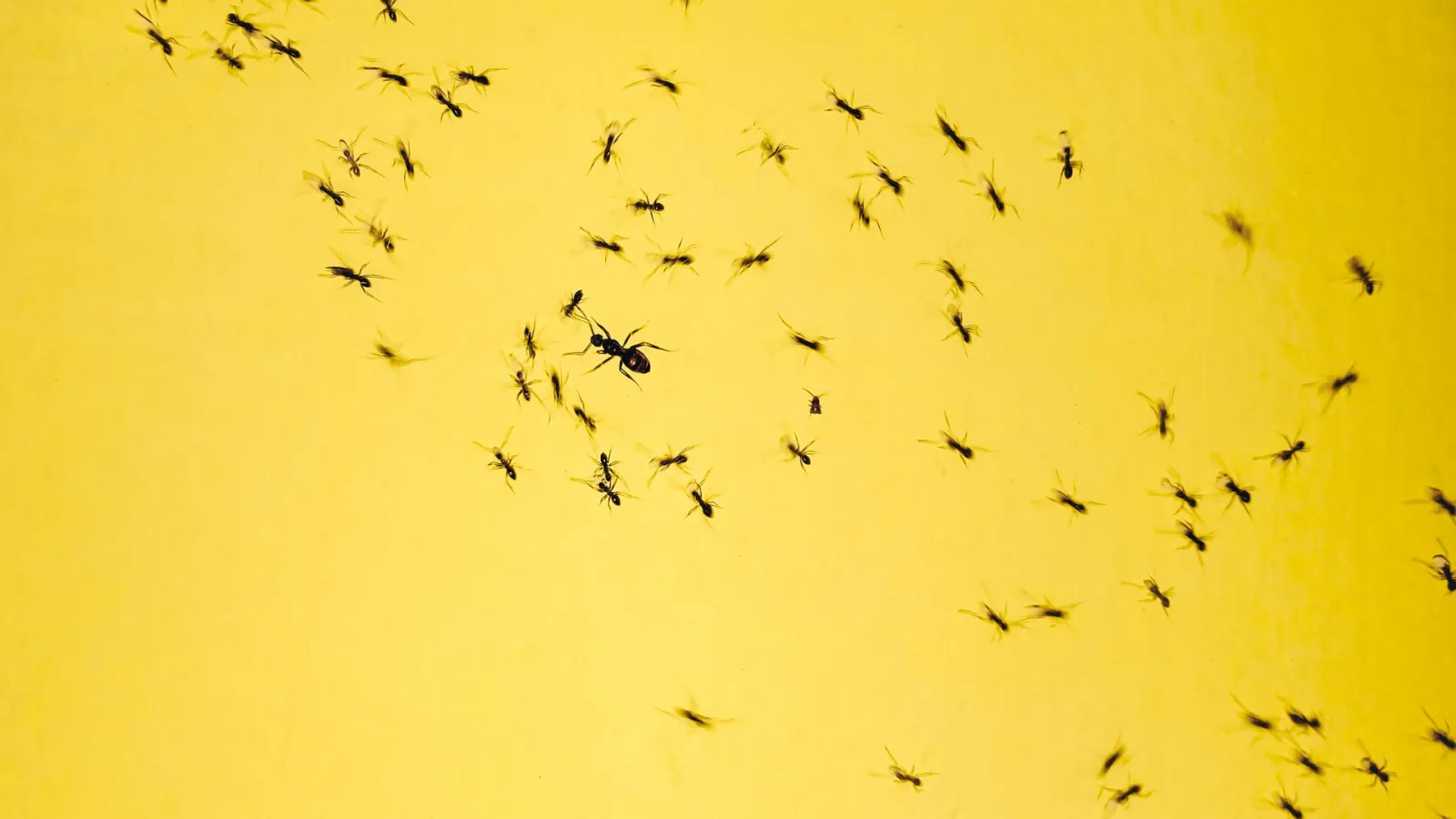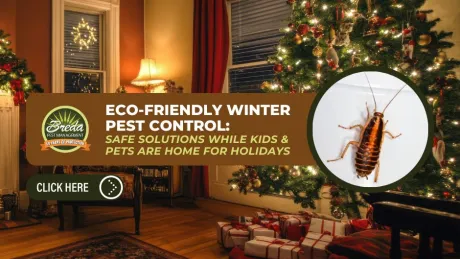
The most common pest in Georgia? Ants. When you spot those tiny little home invaders, your mind tends to fly into panic mode immediately, which we totally understand! Where did they come from? How did they get in here? How do I get rid of them NOW? All of these questions circling around in your mind will likely spur you into action, grabbing the closest pesticide spray or running to the store to buy them out of bait traps.
Before you attempt some DIY ant control, we have three mistakes we commonly hear about our customers falling victim to and we want to make sure that you don't repeat their mistakes. Here are three common DIY ant control mistakes and some better pest control steps you can replace them with.
Mistake #1: Not knowing which ants you're treating for
Would you ever throw a bunch of baking ingredients into a bowl and hope for a cake? Do you open up an IKEA box, toss aside the directions, and expect an intact and functional piece of furniture at the end of your efforts? There are specific directions and materials for every project for a reason: to make sure the end result aligns with your expectations. And ant control treatment is no different.
There are many types of ants living across the country, and there are eight varieties that are native Georgia ants. Below is a quick list to glance through before you start attacking that ant trail or anthill:
Argentine Ant: Dull brown and 1/12 - â " long; emit a musty odor when crushed; best treated with a combination of baits: sugar-based bait, a fat-based bait, and a protein-based bait
Carpenter Ant: Dark brown-black and 1/4 - â " long; can be found indoors and outdoors; will build indoor nests to be close to food sources; are most active at night; best treated with a sugar-based and a protein-based slow-acting ant bait
Longhorn Crazy Ant: Black with bluish tint and â " long; have elongated, horn-like antennae; often found in areas where they have easy access to sweet foods; travel with an erratic, "crazy" movement; best treated with both a sweet and a protein-based bait together and eliminate any nearby food competition
Tawny Crazy Ant: Reddish-brown and â " long; often found in rotten or damaged wood and in gaps in walls or siding; can cause damage to electrical and computer equipment by chewing through insulation and wiring; best treated with a sugar-based and a protein-based bait together place a non-repellent insecticide around the perimeter of the house to create a protective barrier
Fire Ant: Reddish-black and 1/16 - ¼" long; like open areas with lots of sunlight; prefer loose soil or near foundations like rotting logs, tree stumps, and cracks in concrete to make their nests; best treated by broadcasting ant bait across the entire yard every year during warm months, and treating individual mounds with liquid insecticide
Pharaoh Ant: Yellow-red coloration on the head and thorax, black abdomen and 1/16" long; prefer warm areas with access to water; can make nests indoors and outdoors; will travel very long distances to get to food; best treated with a sugar-based and a protein-based bait and outdoor broadcast bait
Thief Ant: Yellow-brown coloration on the head and thorax, black abdomen and 1/16" long; notorious for getting into and contaminating sealed food items; can survive in almost any climate; best treated outdoors by drenching nests with a strong liquid insecticide, or treat indoors with a slow-acting protein-based bait
You can read even more information on each of these Georgia ant varieties in our online guide here.
Mistake #2: Using the wrong treatment
Ant control treatments are not a one-size-fits-all answer to your Georgia ant infestation. It may be tempting to grab that name-brand ant bait trap or broadcast spray, but we highly recommend taking the time to do some research before you buy.
There are also some truly DIY ant control tricks out there, like pouring boiling water into an anthill. This might be an incredibly satisfying thing to do and it is a chemical-free treatment, but you won't kill an entire colony, which means the surviving ants will just rebuild somewhere else, probably still in your yard.
To truly eradicate the ant population on your property, you will have to choose products or treatments that use key chemicals to kill the ants. How the product is applied will make all the difference in keeping your home and yard as kid and pet-friendly as possible. Call us today to discuss a treatment plan for ants that will not only free your home of those creeping pests but also keep your home as free of chemicals as possible.
Mistake #3: Only taking care of the anthill
When you've discovered a massive trail of ants and you've taken the time to follow them back to their home, it is completely understandable for your initial reaction to be a swift attack on that anthill. However, that one-time annihilation does not guarantee that you've rid your entire property of ants. Like other insects, ants will happily set up their homes in just about any place that meets their environment needs, usually somewhere with moisture and obviously access to a food source.
Ants are incredibly invasive and adaptive, so they can get creative with their homes, which means you need to regularly check all potential entry points and havens. If you've found anthills in your yard, check your gutters, attic, crawlspace, and even your walls. If you'd like to have a professional go over your home with a fine-tooth comb (we don't really use a combâ¦), give us a call and we'll come out and help you get some peace of mind with our ant control service.
If you find yourself needing pest control and want it handled thoroughly, don't hesitate to give us a call. The Breda Guarantee promises to fix your pest problem and keep it fixed—no matter the circumstances. Schedule a consultation online or give us a call at 770-466-6700.



